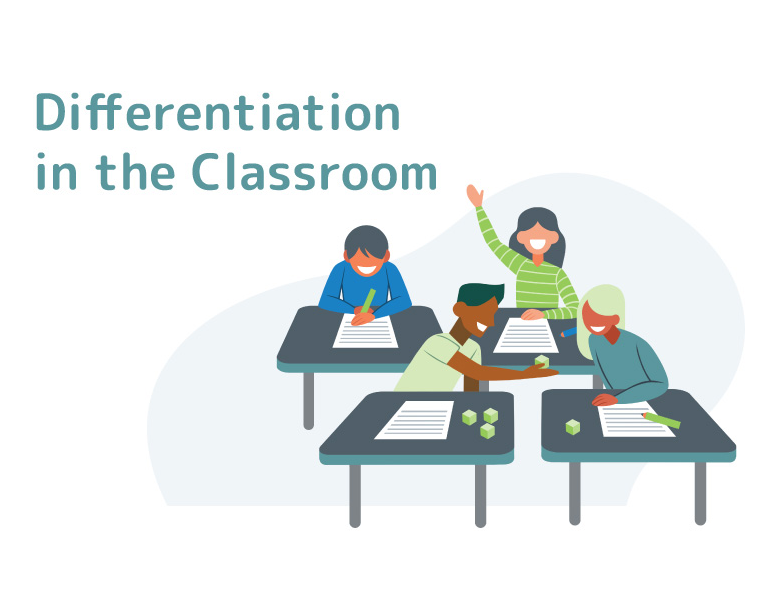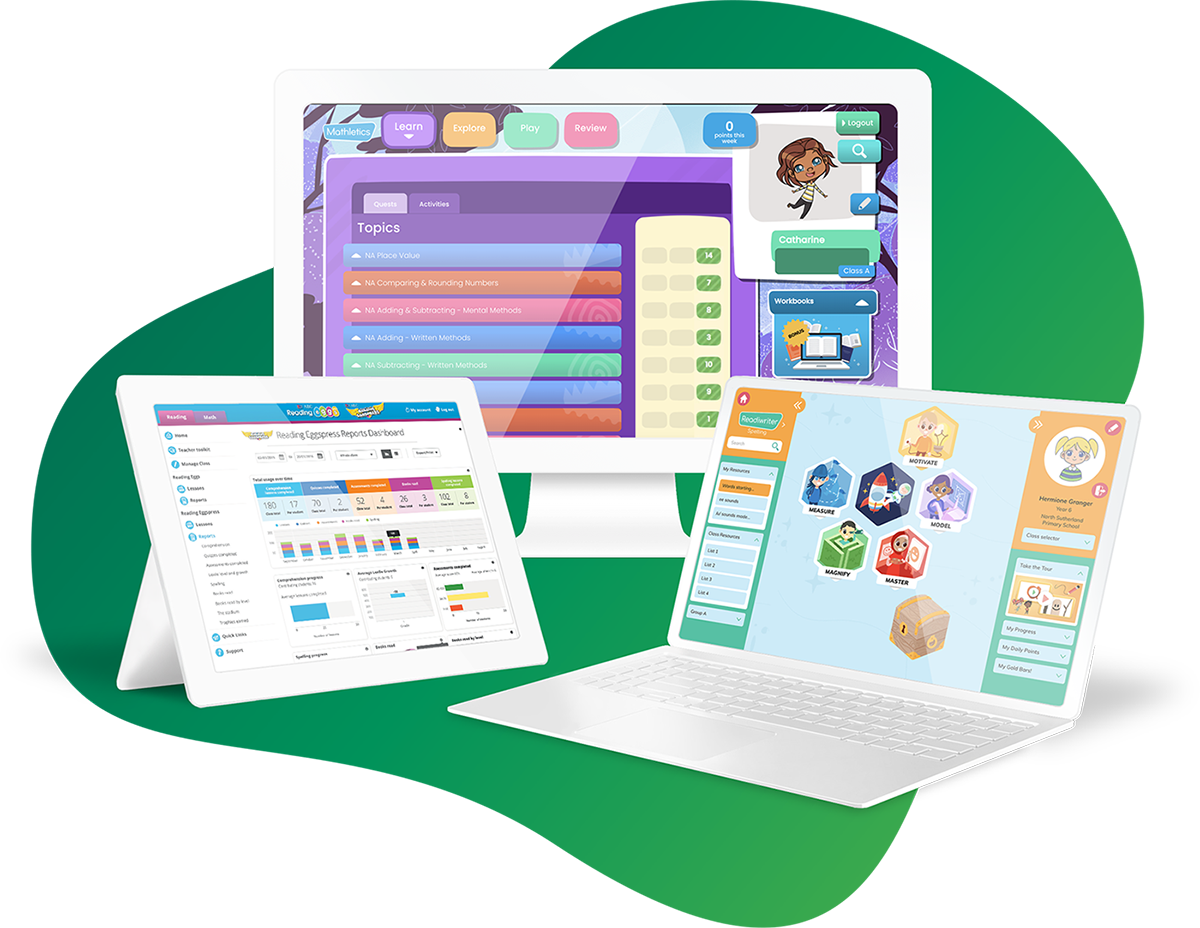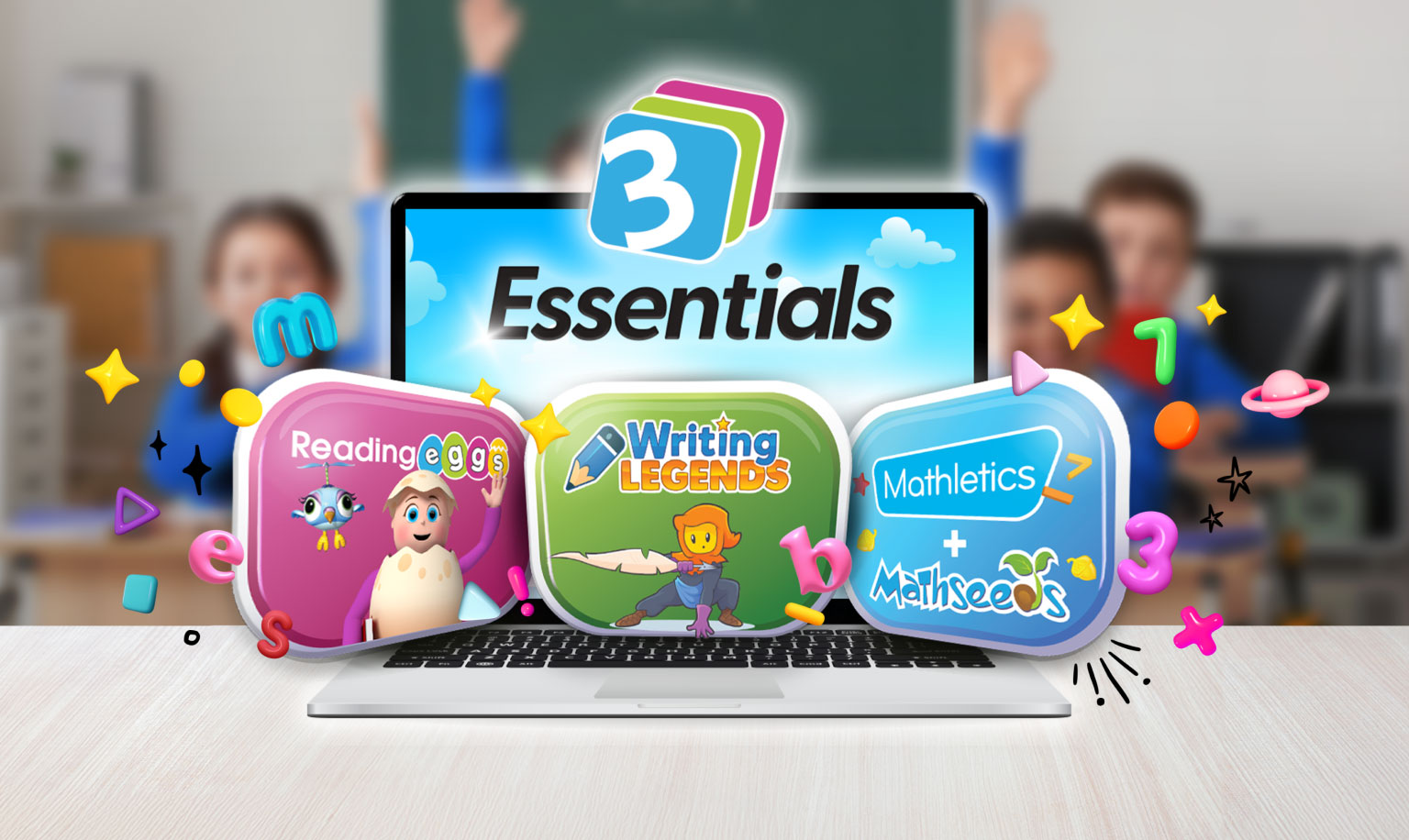
Differentiated instruction is still a challenge for teachers because of the logistics and time required to implement it. We know it’s important, but we’re often at a loss as to how we make it happen.
This post will take you through everything you need to know about differentiated instruction and equip you with actionable strategies. You’ll be better placed to serve the learning needs of every individual in your class.
What is differentiated instruction?
Differentiation is the process of adapting learning experiences to cater to students of mixed ability.
To meet the needs of different students, a teacher might differentiate their:
- content: the actual subject matter of their teaching
- instruction: their teaching strategies and methods
- product: the result that students produce
- environment: the space where learning occurs.
Why differentiated instruction is important
In any given class, some students will struggle while others whip through the curriculum and complain about it being “too easy”. In between these groups exists a wide range of different ability levels.
The range of abilities and student learning styles has been further widened by the move to inclusive education. Increasingly, mainstream classrooms are home to students who might previously have occupied special education programs. For example:
- students with psychological or behavioral disorders
- gifted students
- students with physical disabilities
- students from different linguistic backgrounds
- students with cognitive or learning disorders (e.g. dysgraphia, dyslexia).
Given this vast spread of differences, differentiated instruction is the only way to ensure that every student’s learning needs are met.
Here’s how teachers can differentiate across content, instruction, product, and environment for different learners.
How to differentiate learning content
If students are engaging with the learning content at different levels, you can use one of the following differentiation strategies.
Include a range of difficulty levels in each activity
A single activity might have tiered levels of difficulty, or you might assign different activities to strategically grouped students.
Present learning content in multiple modes
Students will have different preferences when it comes to engaging with the learning material. A verbal explanation might do the trick for some, while others might better understand a diagram or infographic. You can also introduce technology for audio and visual presentations of key concepts.
Set support homework or challenge assignments
Homework can be designed as a source of support or extension for the students who need it. Success, however, is dependent on making students feel as if it isn’t extra work.
Make support homework low-stakes and accessible. Let students set their own due dates and explain that the goal is improvement as opposed to performance. One strategy is to meet one-on-one and go over the work together once it has been completed.
Pitch extension homework as an engaging challenge and connect it with students’ real areas of interest. For example, they could track their performance in a video game over the week and represent the data in a graph.
Pull-out groups
Meet with small groups to revise learning content in a slower and less pressurized environment. You can also use pull-outs to provide extension for more advanced learners.
This requires a substantial time investment, but it has powerful benefits. Pitch it as a “club” to build a sense of community in the group.
How to differentiate by process
Adapt your own instructional strategies to differentiate for varied ability levels. Consider the following.
Adjust your level of involvement
Your level of involvement can be adapted to suit the needs of different learners. For example, if a particular group needs support, you might step them through more intensive direct instruction. On the other hand, students who are already confident may benefit from a more independent approach to the same activity. This approach works best if you have grouped students by ability level (see below).
Strategic groups
Grouping students by ability level makes the entire differentiation process easier to manage. Once learners of similar ability are in the same place you can:
- hover in the vicinity of groups that need more support, so you are on hand to intervene and assist
- assign differentiated work sets
- coordinate a jigsaw activity, where different groups do tasks at varying levels of difficulty but combine for the final product.
Don’t worry if there is still some variation in ability within the groups. It allows students to learn from each other.
Extra time
Giving extra time for an activity provides support for struggling learners who struggle to finish. It also encourages more able students to think about the topic in further depth.
Strategic partners
Coordinate a pair activity that partners less able students with more confident peers. Struggling students are not the only ones who will benefit. More able students will consolidate their understanding by explaining the same concept to their partner.
Use hands-on learning strategies
Some students will benefit from using physical objects to fully understand a concept. Try modeling clay, countable objects, or post-it notes that can be visually rearranged.
How to differentiate by output
Differentiating by output or finished product means that you can give all students the same content and instruction without customization. The differentiation lies in what students do with that content.
Use the following strategies to differentiate by output:
Specify differentiated products
The simplest way to differentiate by output is to specify different products for students of different ability levels.
For example, there might be three different comprehension tasks for learners of different ability levels:
- Level 1: produce a timeline of literal events in the text
- Level 2: produce a short-answer response to a given question
- Level 3: write a paragraph discussing one idea from the text you found interesting.
Note: in this example, the tasks are differentiated by quality as opposed to quantity. Avoid creating tasks that are “challenging” simply because they require students to produce more work.
Give students a choice of final product
Students could demonstrate their learning in the form of a written piece, drawing, diagram, presentation, or multimedia project.
When giving students a choice, bear in mind the assessment criteria or learning you wish to see. You may have to narrow the parameters in order to ensure every student engages with the curriculum.
Allow students to develop a product of their own
If your students are older, let them come up with the product independently. It helps if you have a clear rubric or explicit outcomes that you can use to ensure expectations are clear.
How to differentiate the learning environment
The classroom environment itself can be differentiated to meet the needs of different learners. Consider how your students learn best and how you might factor this into the design of the space. Here are some ideas.
Teach students that everyone learns differently
Help your students to understand that while some people might like learning actively with talk and movement, other peers may prefer quiet, independent work. This joint understanding will help to develop a classroom environment where every learner’s needs are respected.
Designate different spaces for different types of activity
Combine collaborative zones with spaces for independent and quiet work. You could also use beanbags and cushions to create comfortable pull-out areas that are differentiated from the regular classroom order.
This requires time and resources, but you can start small. Students could create signs that designate certain areas of the room as different zones, for example.
Develop classroom management strategies for a harmonious environment
Classroom management strategies allow you to adjust aspects of the environment as you need. For example, you might reduce noise level, transition into a different activity, or put a stop to distracting behavior.
Find our list of classroom management strategies here.
Incorporate materials that reflect student diversity
Our classrooms should adapt to the increasingly multicultural profile of our students. Ask students to bring in something representative of their culture or home and collaboratively use these to decorate the room. This gives all students a unique connection to the environment.
Why differentiation is challenging
The concept of differentiation is hardly new, yet many teachers still find it difficult to implement it in a regular classroom setting. This is largely due to the following challenges.
Lack of administrative support: school leaders may not provide the resources or time allowances required to meet different learner needs.
Fear of straying from the curriculum: teachers perceive that adjusting the content of their classes may result in poor or inaccurate assessment results.
Logistical challenges: implementing multiple activities or teaching approaches in a single classroom is not easy and requires strong classroom management strategies.
Time spent planning: planning multiple sets of learning takes time that teachers do not have.
Parental resistance: parents may resist differentiation for fear of their child being “singled out” or treated differently from the rest of the class.
5 easy ways to get started with differentiated instruction
If you’re feeling overwhelmed by all the challenges that seemingly stand in the way of differentiation, start small.
You don’t need to prepare multiple lesson plans or resource sets. Instead you can take simple initiatives such as the following.
Open-ended questioning
This staple of the teacher toolkit is a powerful differentiation strategy in its own right. Asking open-ended questions invites responses from every member of the class — regardless of their ability level.
Avoid fishing for “right” or one-word answers. Solicit opinions and thoughts instead. When students respond, indicate their responses are valued by engaging them further (e.g. “Interesting. What makes you say that?”).
Give choice
Giving students choice wherever possible is one of the easiest ways of differentiating your classroom. For example, you could:
- give students the option of working solo or in a group for an activity
- ask students what order they would like to do tasks in
- give students the option of accelerating through content or revising further
- ask students where and how they would like to work on a given activity.
Differentiate homework
If time and logistics make differentiation challenging in a live classroom environment, make it part of homework instead. For example, Mathletics and Reading Eggs allow you to assign differentiated work sets to individual students or groups depending on ability.
Using homework for differentiation spares you the difficulty of managing multiple activities and groups at once in the classroom.
Get parent help
Similarly, if classroom differentiation is not an option, you can seek parent support in providing students with tailored learning opportunities. Explain that you have some extra initiatives for their child to take at home for the purpose of support or extension. They can do their part to keep their child motivated and accountable.
As mentioned previously, not all parents will be open to differentiation, so tread carefully. Frame your suggestions as a means to progress, rather than emphasizing the student’s disadvantage.
Resource libraries
Students can also access differentiated resources independently if you provide them. Upload a variety of resources to your LMS and direct students to the ones appropriate to their level. Again, this spares you the logistical challenges of instructing multiple groups at once in class.
Leveraging technology for achievable and effective differentiation
Try as we might, providing constant tailored instruction for every individual just isn’t feasible in a classroom of 25+ students. Yet technology can be immensely powerful in bringing you closer to this goal. For example, you can:
Use gamified programs that provide individual learning paths
Gamified programs can respond to the needs of individual students by creating differentiated learning experiences. For example, our Mathletics and Reading Eggs programs place each student on a personal lesson track automatically tailored to their ability level. They can work their way through their personal learning journey at home or in class, without you having to juggle different activities for every student.
Use programs to group students by ability level and assign work
Learning programs remove the challenge of coordinating differentiated groups in the classroom. Both programs allow you to arrange your class into groups, and you can then assign differentiated digital activities as per their ability level. You don’t need to create the activities, either. Each program comes with an inbuilt resource library containing hundreds of activities, workbooks, and worksheets.
You can also assign self-created resources to different students on a platform such as Google Classroom or Microsoft OneNote. With all assignments and activities digital, there’s no need to wrestle with the photocopier for multiple sets of paper resources.
Use data from programs to inform classroom differentiation
Digital differentiation can be used to inform the tailored learning experiences you deliver in the classroom. For example, our programs Reading Eggs and Mathletics automatically mark student activities and track results, which can then inform other components of your teaching. If you notice that certain students have struggled with a fractions module on Mathletics, you might set up a pull-out group.
While differentiation is challenging, even for experienced teachers, learning programs can help you take the first steps. An account with either program gives you the power to differentiate with ease, and grants your students access to individual learning journeys that build directly off your curriculum content. We’re confident they’ll love it just as much as the other three million students who currently use our programs globally.











